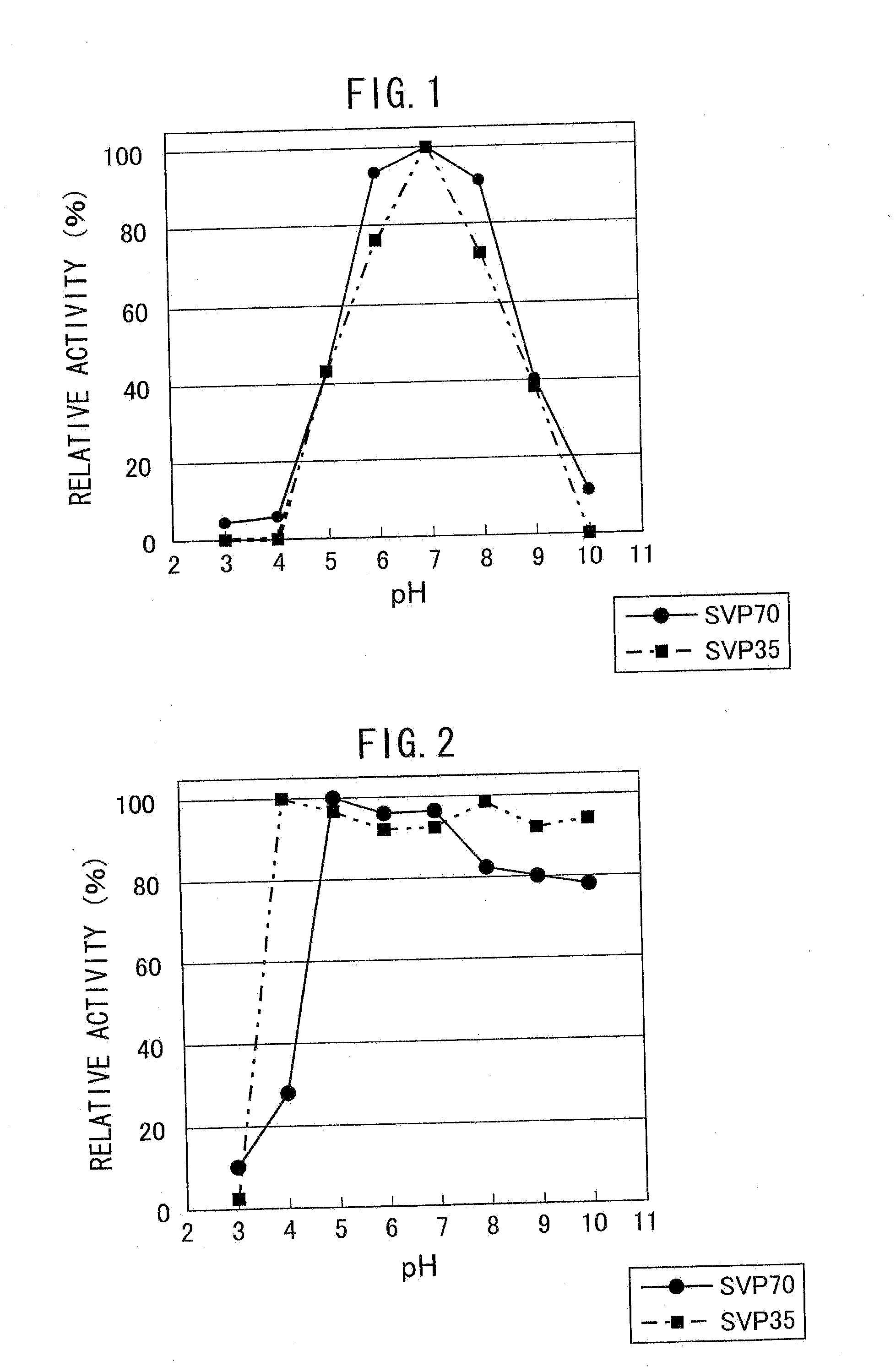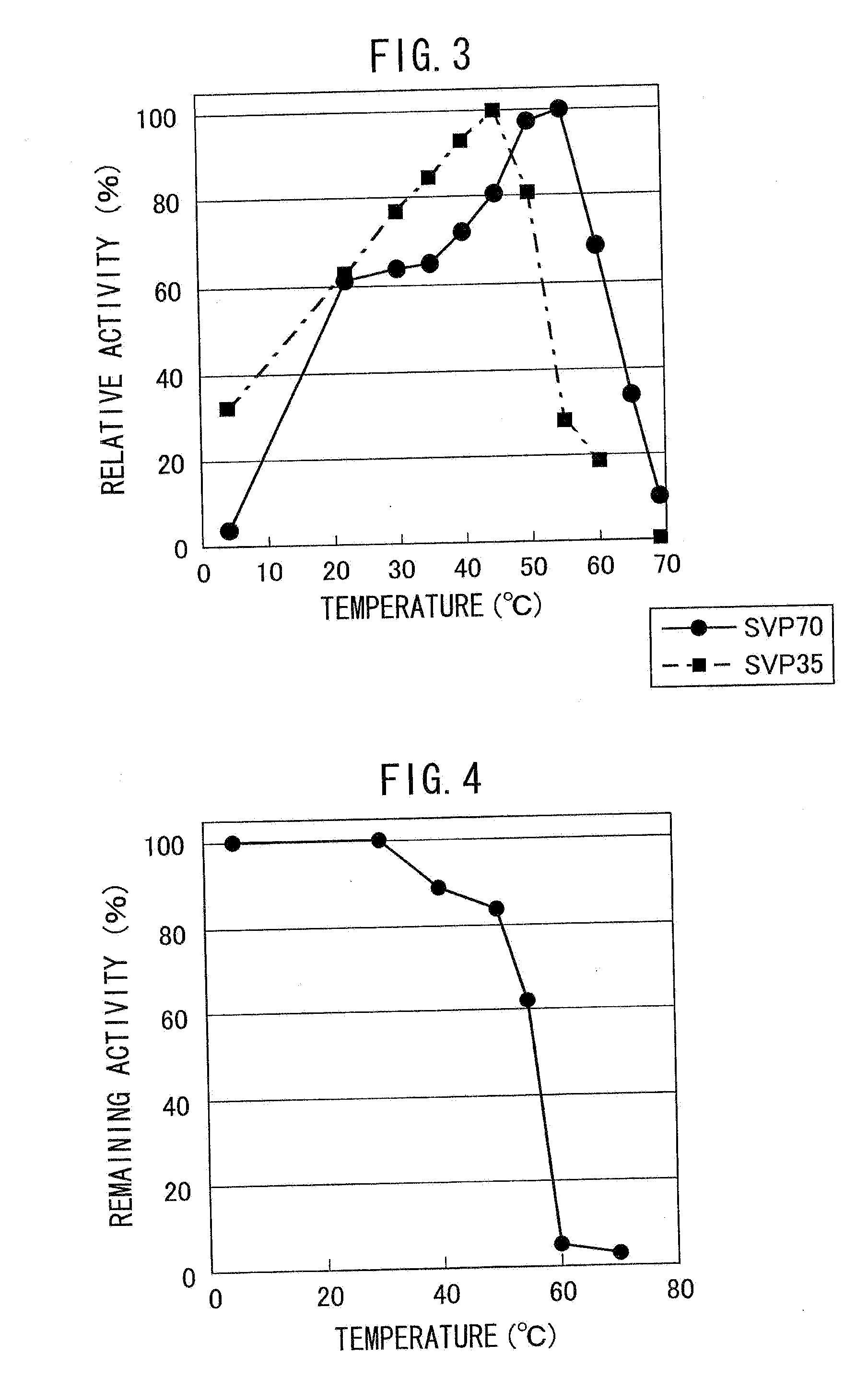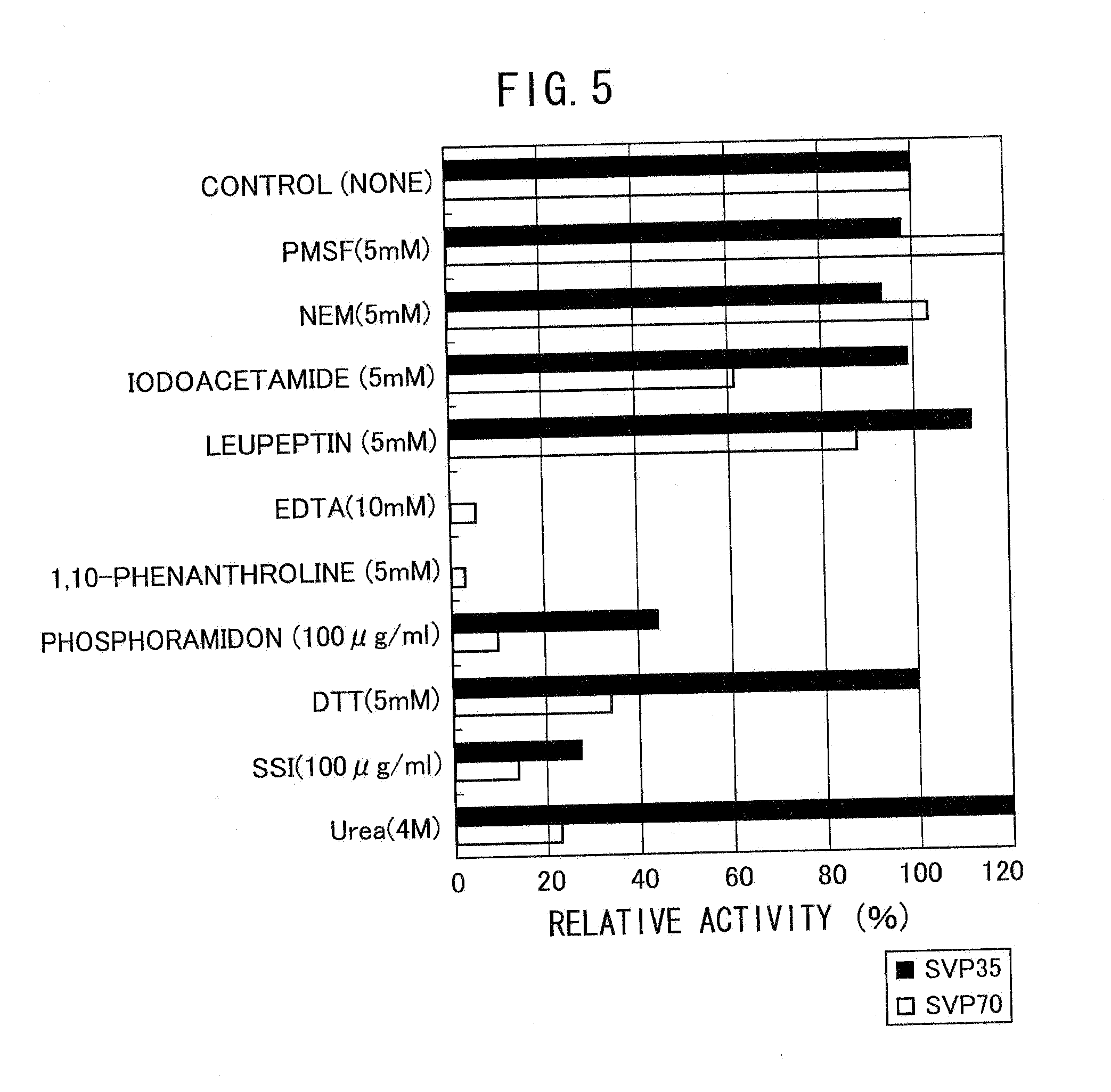Method of producing microbial transglutaminase
a transglutaminase and microorganism technology, applied in the field of protease, can solve the problems of low production efficiency, risk of degrading the transglutaminase itself, and low production efficiency, and achieve the effect of little degradation
- Summary
- Abstract
- Description
- Claims
- Application Information
AI Technical Summary
Benefits of technology
Problems solved by technology
Method used
Image
Examples
example 1
Neutral Metalloprotease Produced by Streptoverticillium mobaraense IF013819
[0079](1) Purification of Neutral Metalloprotease (SVP70) Produced by Streptoverticillium mobaraense IF013819
[0080]800 mL of ISP2 culture medium (4 g of Yeast Extract, 10 g of Malt Extract, 4 g of Glucose per liter of water, adjusted to pH 7.3) was placed in a 5 L Sakaguchi flask (shaking flask), and was inoculated with Streptoverticillium mobaraense IF013819 from a plate, and cultured by shaking at 30° C. for 9 days at 120 rpm. The culture medium was centrifuged, and the supernatant of the culture was collected. It was filtered using a Depth filter (3 μm of pore size, Sartorius Co. Ltd.), followed by concentration using Sartocon Slice membrane having a pore size of 10,000 Da (Saltorius Co. Ltd.). The concentrate was diluted 10-fold with Tris-HCl buffer / 5 mM calcium chloride (pH 7.5), subjected to a DEAE-Sepharose FF (2.6 φ×10 cm, Amersham Pharmacia Co. Ltd.) column equilibrated with the same buffer, using FP...
example 2
Conversion of Transglutaminase from Streptoverticillium mobaraense IF013819 (pro-MTG) into an Active Form
[0125]Using pro-MTG (1 mg / ml) expressed by Corynebacterium glutamicum as a purified substrate, the neutral protease (SVP35, SVP70) from Streptoverticillium mobaraense or the neutral metalloprotease SGMP II from Streptomyces griseus was mixed in the ratio of the substrate:the enzyme=200:1, the mixture was reacted at 30° C. After 0, 1, 2, 4, 7, 20 hours, the reaction mixture was sequentially picked up, and the aliquots of the reaction mixture were mixed with SDS-PAGE sample buffer and heated at 95° C. for 3 minutes, and then subjected to SDS-PAGE according to Laemmli's method (Nature, 227, 680-685 (1970)). The result is shown in FIG. 6. As can be seen in FIG. 6, when these proteases were reacted, pro-MTGs were converted to the mature forms, and the produced MTGs were not reduced even after a long-term reaction. The transglutaminase (TG) activity of the picked up fraction was measur...
PUM
| Property | Measurement | Unit |
|---|---|---|
| temperature | aaaaa | aaaaa |
| temperature | aaaaa | aaaaa |
| temperature | aaaaa | aaaaa |
Abstract
Description
Claims
Application Information
 Login to View More
Login to View More - R&D
- Intellectual Property
- Life Sciences
- Materials
- Tech Scout
- Unparalleled Data Quality
- Higher Quality Content
- 60% Fewer Hallucinations
Browse by: Latest US Patents, China's latest patents, Technical Efficacy Thesaurus, Application Domain, Technology Topic, Popular Technical Reports.
© 2025 PatSnap. All rights reserved.Legal|Privacy policy|Modern Slavery Act Transparency Statement|Sitemap|About US| Contact US: help@patsnap.com



